Using ballscreens (Krueger)
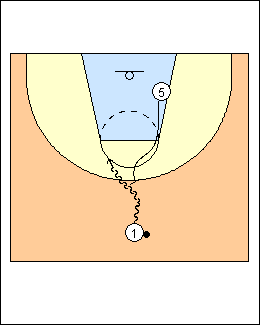 | 1 Ryan Krueger FIBA Assist Issue 26 The ballhandler must set up his defender away from the screen. Off the dribble use an inside-out move then quick crossover; from triple threat, use a "step across" if the defender is bodied up, otherwise a quick "rip-thru" away from the screen (a violent ball and foot fake). To beat the defender away from the screen ("bingo"), use a crossover or between-the-legs dribble.. Wait for the screen to be set, come off shoulder to shoulder, turn the corner picking up speed, attack north-south, and take at least two dribbles to drag the screener's defender as far as possible, even if the defence is trapping. Attack the big man, options in order are drive, shoot, pass. To make it hard for his defender to "show" aggressively, the big should sprint into the screen, and set the angle late. He can start under the rim, run up through the lane, then set an angle that forces the dribbler's defender over the screen (between back to the baseline and back to the corner). Another option (shown) is to start on the right block, run up through the right elbow, then at the last second unexpectedly set an angle that brings the dribbler to his left hand (a "banana screen"). The big sets the angle screen with his foot on the three-point line, it's the guard's job to use it. |
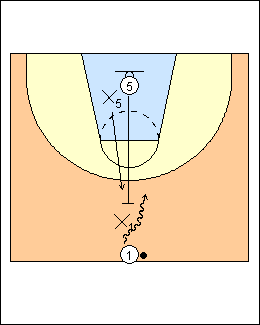 | 2 A flat-angle high ballscreen (back to the baseline) is harder to defend. Set it outside the arc, giving the guard more space to come off at a sprint. The dribbler is in a straight line with the screener (so xscreener doesn't know where to show), gets his defender to lean on one side, then makes a cross-over dribble. If xdribbler tries to force the ballhandler to one side ("blue", usually weakhand), the dribbler will move to that side then spin back off the screen. |
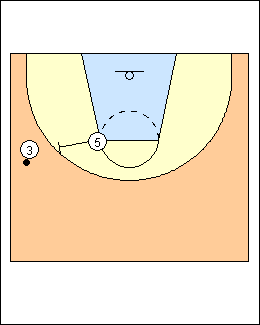 | 3 For a sidescreen, the angle should be between back to the opposite corner (the defence is going under the screen) and chest to the sideline (the defence is going over). In transition, circle under the ball to set the right angle for the drag screen. |
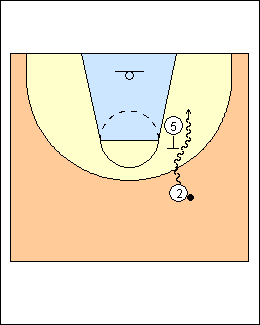 | 4 For a "hat" ballscreen, the screener is more to the middle of the floor and has his back to the baseline. The dribbler drives baseline, attacking xscreener's outside shoulder, looking to drive baseline or crossover/spin to the middle. |
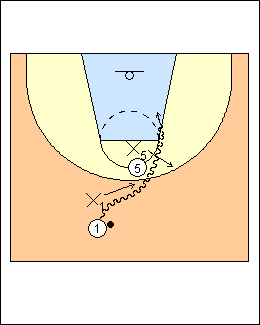 | 5 Other ballscreen reads: Soft show - if xscreener make a soft show and xdribbler goes over, the dribbler attacks xscreener's shoulder with at least 2 dribbles. Hard show and over (shown) - xscreener loses contact with the screener, the dribbler sees and takes daylight, looking to split the screen. Red - if both defenders show hard and early, almost trapping ("red"), the ballhandler can spin dribble away from the show to the rim. Under - if xdribbler goes under the screen, the dribbler attacks the rim with at most two dribbles, or optionally shoots behind the screen. If xscreener shows, the screener rescreens xdribbler, the dribbler makes a cross-over dribble the other way. Switch - the screener rolls to create space, the ballhandler dribbles back outside the arc then attacks xscreener to finish with a lay-up (don't pass to a screener posting up xdribbler). Bingo - if xdribbler tries to force the ballhandler into the screen, he is vulnerable to be being beaten away from the screen. |
This page was made with Basketball playbook from Jes-Soft